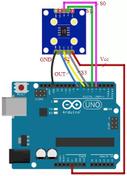Arduino Uno vs. Leonardo: Key Differences and Comparison
Advertisement
This article explores the key differences between the Arduino Uno and the Arduino Leonardo, providing a table comparing their features.
Arduino Uno vs. Leonardo: A Head-to-Head Comparison
The following table highlights the differences between the Arduino Uno and the Arduino Leonardo:
| Features | Arduino Uno | Arduino Leonardo |
|---|---|---|
| Microcontroller Used | Atmega328 | Atmega32U4 |
| Detachment of Microcontroller | Not detachable (mounted on the board) | Easily detachable |
| Number of PWM Pins | 6 | 7 |
| Number of I/O Pins | 14 | 20 (including analog I/O pins) |
Key Takeaways
The main differences lie in the microcontroller used and its detachability. The Leonardo uses the Atmega32U4, which allows it to act as a USB device directly, simplifying tasks like keyboard and mouse emulation. The Uno, with its Atmega328, relies on a separate USB-to-serial converter. Also, the Leonardo’s microcontroller can be detached more easily.
Advertisement
 RF
RF


